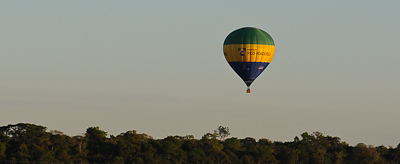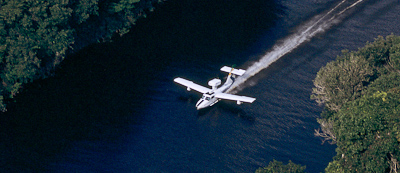English
The Flying Rivers Project
The Flying Rivers project seeks to quantify the amount of water vapour transported by these invisible rivers passing over our heads. They may well account for a volume of water equivalent to the flow of the mighty Amazon River itself, estimated at 200,000 cubic metres per second: the most powerful discharge of any single river in the world.
The lower half of Brazil, essentially the country’s agricultural heartland and industrial powerhouse, depends heavily on its hereto reliable and abundant rainfall. Brazil receives more rain that any other country in the world (estimated at over 15,000 cubic kilometers per year – almost double the next best, Russia) and, until recently, has relied on hydro power for up to 90% of its energy requirements.
View the current uncertainty regarding the long-term impact of global warming and climate change, it is increasingly important to keep abreast of new data in order to have a better understanding of how the climate works.
By following the same westerly direction as the trade winds and collecting samples of airborne water vapour from locations as diverse as above the Amazon delta or the westernmost borders of Brazil, it is hoped to establish how often the humidity is recycled to the atmosphere after rainfall through evapotranspiration from the rainforest. By demonstrating this essential role played by the trees, it is hoped to increase awareness of the importance of maintaining the forest alive and well, so that the whole process, and the rainfall that is eventually generated, may continue indefinitely.
Inspired by a talk given by Prof. Antonio Nobre on a boat sailing up the Rio Negro in 2006, the Flying Rivers project was conceived by Gérard Moss with the collaboration of a number of Brazilian scientists. Gérard undertook all the flying activities and collecting of samples, in addition to securing the funding of the project with Petrobras, and is responsible for the overall coordination. Analysis of the samples, interpretation of data and assessment of scientific results lay in the capable hands of a team of renowned scientists, spearheaded by the eminent Prof. Eneas Salati. Back in the 70s, it was Salati who first presented a theory on the correlation between evapotranspiration from the rainforest in the Amazon basin and rainfall in the southern half of the country.
It is a complex issue. The moisture-laden trade winds initially bring humidity off the Atlantic to the mouth of the giant river, and then carry it inland across the continent in an on-going process of rainfall/evapotranspiration/rainfall until coming up against the wall of the Andes. As the Cordillera forces the winds to swerve southwards, they continue carrying the moisture generated by the forest to other regions of the continent.
The big question is, what might happen in the south if the rainforest is destroyed to make way for yet more pasture, soya and sugarcane? If the hydrological cycle stops pumping out such huge volumes of humidity?
The project began 2007. Flying river trajectories were monitored and samples of water vapor continued to be collected for analysis by the team at CENA, in Piracicaba, until 2012.
As from 2011, in addition to collecting further samples of airborne moisture, the project’s focus turned toward the general public, with emphasis given to education. In partnership with municipal and state-government educational departments, the project runs workshops for teachers in a number of cities all around Brazil. We understand that teachers are tremendous multipliers of information. In the case of a meteorological phenomenon like flying rivers, the topic is always highly relevant, but even more so in these times of drought and climate change. It is hoped that when young people learn how that ever-so-distant rainforest actually has a profound impact on their daily lives, they will understand the importance of fighting for its preservation for their own future well-being.
Project Objectives
– To try to ascertain the origin of the water vapour, rainwater and river water in the areas crossed by the flying rivers.
– To promote a better scientific understanding of these processes and their importance in rainfall patterns in central and southern Brazil.
– To help Brazil’s large urban population – the man in the street – understand the importance of protecting the true source of the water resources upon which they depend for drinking, domestic and industrial usage, energy and agriculture.
– To raise awareness of the rôle played by the Amazon rainforest in generating the water that turns the great powerhouse of Brazil’s economic activities, and put a value on its preservation.
The Flying Rivers Phenomenon
Gérard and Margi Moss – exploring the environment
International press clipping and videos





